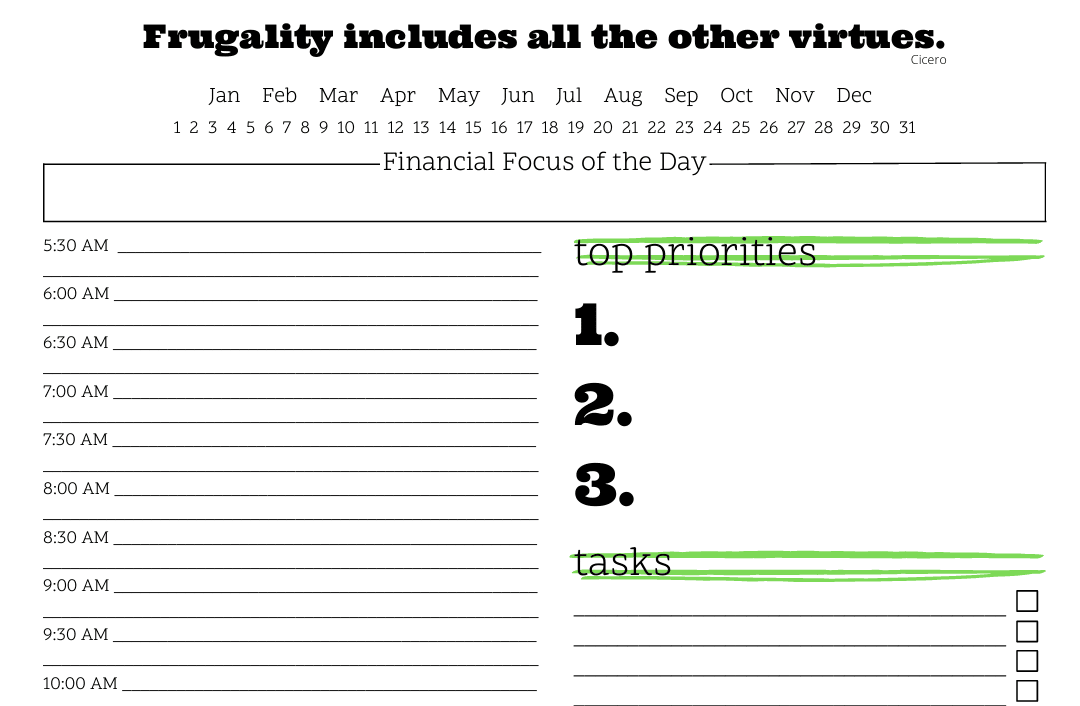This article may contain references to products or services from one or more of our advertisers or partners. We may receive compensation when you click on links to those products or services. Nonetheless, our opinions are our own.
The information presented in this article is accurate to the best of our knowledge at the time of publication. However, information is subject to change, and no guarantees are made about the continued accuracy or completeness of this content after its publication date.

Updated by Albert Fang
Is Swing Trading the Best Strategy For You?
In the ever-evolving landscape of financial markets, traders are constantly on the hunt for strategies that align with their goals, risk tolerance, and lifestyle. Among the myriad of approaches, swing trading has emerged as a compelling option, captivating both novice and seasoned investors alike. But what exactly is swing trading, and is it the right fit for you? This article delves into the nuances of swing trading, exploring its potential advantages and pitfalls, while guiding you through the essential considerations to determine if this dynamic strategy can unlock your trading potential. Whether you’re looking to capitalize on short-term price movements or seeking a more flexible trading schedule, join us as we navigate the intricate world of swing trading and help you uncover whether it’s the best strategy for your unique financial journey.
- Understanding Swing Trading: A Comprehensive Overview
- Evaluating Your Risk Tolerance and Time Commitment
- Key Indicators and Tools for Successful Swing Trading
- Developing a Personalized Swing Trading Strategy
- Common Pitfalls to Avoid in Swing Trading
- When to Consider Alternative Trading Strategies
- FAQ
- Concluding Remarks
- Recommended Reads
Understanding Swing Trading: A Comprehensive Overview
Swing trading is a popular strategy among traders looking to capitalize on short to medium-term price movements in the financial markets. This approach typically involves holding positions for several days to weeks, allowing traders to benefit from price swings without the need for constant monitoring. By focusing on technical analysis and market trends, swing traders aim to identify optimal entry and exit points, making it essential to understand the underlying principles of this trading style.
Key characteristics of swing trading include:
-
- Time Commitment: Unlike day trading, swing trading requires less time, making it suitable for those with full-time jobs or other commitments.
-
- Risk Management: Successful swing traders implement strict risk management strategies, often using stop-loss orders to protect their capital.
-
- Market Analysis: A solid grasp of technical analysis is crucial, as traders rely on chart patterns, indicators, and market sentiment to make informed decisions.
To illustrate the potential returns and risks associated with swing trading, consider the following table:
| Trade Type | Average Return (%) | Risk Level |
|---|---|---|
| Short-term Swing | 5-10% | Medium |
| Medium-term Swing | 10-20% | Medium-High |
| Long-term Swing | 20-30% | High |
Ultimately, the effectiveness of swing trading as a strategy depends on individual goals, risk tolerance, and market conditions. By understanding the nuances of this trading style, you can better assess whether it aligns with your financial objectives and lifestyle.
Evaluating Your Risk Tolerance and Time Commitment
Before diving into swing trading, it’s crucial to assess your personal risk tolerance and the time you can realistically dedicate to this strategy. Swing trading involves holding positions for several days to weeks, which can expose you to market fluctuations. Understanding how much risk you are willing to take can help you make informed decisions about your trades. Consider the following factors:
-
- Financial Goals: Are you looking for quick gains, or are you in it for the long haul?
-
- Emotional Resilience: How do you handle losses? Can you stay calm during market volatility?
-
- Investment Knowledge: Do you have a solid understanding of technical analysis and market trends?
Equally important is evaluating the time commitment you can afford. Swing trading requires regular monitoring of your positions and market conditions, which can be time-consuming. Here’s a simple table to help you gauge your availability:
| Time Available | Impact on Trading |
|---|---|
| Full-time (8+ hours/week) | Ability to actively manage trades and react to market changes |
| Part-time (4-8 hours/week) | Can monitor trades but may miss some opportunities |
| Limited (1-4 hours/week) | Challenging to manage trades effectively; may require more passive strategies |
By carefully evaluating these aspects, you can determine whether swing trading aligns with your financial aspirations and lifestyle. This self-assessment will not only guide your trading strategy but also help you set realistic expectations for your investment journey.
Key Indicators and Tools for Successful Swing Trading
Successful swing trading hinges on a combination of key indicators and tools that help traders make informed decisions. Among the most essential indicators are:
-
- Moving Averages: These smooth out price data to identify trends over specific periods, helping traders spot potential entry and exit points.
-
- Relative Strength Index (RSI): This momentum oscillator measures the speed and change of price movements, indicating overbought or oversold conditions.
-
- Bollinger Bands: These bands provide a visual representation of volatility and price levels, allowing traders to assess potential price reversals.
In addition to indicators, utilizing the right tools can enhance your swing trading strategy. Consider incorporating:
-
- Charting Software: Platforms like TradingView or MetaTrader Trading Platform offer advanced charting capabilities, enabling traders to analyze price patterns effectively.
-
- Stock Screeners: Tools such as Finviz or Trade Ideas help filter stocks based on specific criteria, allowing traders to identify potential swing trading opportunities.
-
- News Aggregators: Staying updated with market news through platforms like Bloomberg or Reuters can provide insights into events that may impact stock prices.
By combining these indicators and tools, swing traders can develop a robust strategy that not only identifies potential trades but also manages risk effectively. The right mix of analysis and technology can significantly enhance your trading performance.
Voted "Best Overall Budgeting App" by Forbes and WSJ
Monarch Money helps you budget, track spending, set goals, and plan your financial future—all in one app.
Get 50% OFF your first year with code MONARCHVIP
Developing a Personalized Swing Trading Strategy
Creating a personalized swing trading strategy requires a blend of self-awareness, market knowledge, and a clear understanding of your financial goals. Start by assessing your risk tolerance and investment objectives. This will help you determine the types of stocks or assets that align with your comfort level and financial aspirations. Consider the following factors:
-
- Time Commitment: How much time can you dedicate to monitoring trades and market trends?
-
- Risk Appetite: Are you comfortable with high volatility, or do you prefer more stable investments?
-
- Financial Goals: Are you looking for short-term gains, or are you building a long-term portfolio?
Once you have a clear understanding of your personal criteria, you can begin to develop your trading plan. This plan should include specific entry and exit points, as well as criteria for selecting stocks. A simple table can help you visualize your strategy:
| Criteria | Details |
|---|---|
| Entry Point | Identify stocks with a clear upward trend and set a target price for entry. |
| Exit Point | Establish a profit target and a stop-loss to minimize potential losses. |
| Stock Selection | Focus on stocks with high liquidity and volatility that fit your risk profile. |
backtest your strategy using historical data to evaluate its potential effectiveness. This will not only help you refine your approach but also build confidence in your trading decisions. Remember, the key to successful swing trading lies in adapting your strategy as market conditions change, ensuring that it remains aligned with your evolving financial goals.
Common Pitfalls to Avoid in Swing Trading
Swing trading can be a lucrative strategy, but it’s not without its challenges. Many traders fall into common traps that can derail their success. One major pitfall is overtrading. This occurs when traders make too many trades in a short period, often driven by emotions rather than strategy. Overtrading can lead to increased transaction costs and can dilute the effectiveness of a well-thought-out plan.
Another frequent mistake is ignoring risk management. Successful swing traders understand the importance of setting stop-loss orders and adhering to them. Failing to do so can result in significant losses that could have been avoided. Additionally, many traders neglect to analyze the broader market trends, focusing solely on individual stocks. This oversight can lead to poor decision-making and missed opportunities. To navigate these pitfalls, it’s crucial to maintain discipline and a clear trading plan.
| Common Pitfalls | Consequences | Prevention Strategies |
|---|---|---|
| Overtrading | Increased costs, emotional fatigue | Set clear trading limits |
| Ignoring risk management | Significant losses | Use stop-loss orders |
| Neglecting market trends | Poor decision-making | Conduct thorough market analysis |
When to Consider Alternative Trading Strategies
While swing trading can be an effective strategy for many traders, there are certain circumstances where exploring alternative trading strategies may be beneficial. If you find yourself consistently struggling to achieve your desired results or if market conditions are not aligning with your trading style, it might be time to consider other approaches. Here are some scenarios where alternative strategies could be advantageous:
-
- Market Volatility: If the market is experiencing high volatility, swing trading may not yield the best results. In such cases, strategies like day trading or options trading could provide more opportunities to capitalize on rapid price movements.
-
- Time Constraints: If you have limited time to monitor the markets, longer-term strategies such as position trading or investing in ETFs may be more suitable, allowing you to benefit from broader market trends without the need for constant attention.
-
- Risk Tolerance: If you find that the risks associated with swing trading are too high for your comfort level, consider strategies that align better with your risk appetite, such as dividend investing or value investing, which may offer more stability.
Additionally, it’s important to assess your personal trading goals and preferences. If your objective is to generate consistent income rather than capitalizing on short-term price fluctuations, you might explore:
| Strategy | Description |
|---|---|
| Dividend Investing | Focuses on stocks that pay regular dividends, providing a steady income stream. |
| Value Investing | Involves picking undervalued stocks with strong fundamentals for long-term growth. |
| Options Trading | Utilizes options contracts to hedge risks or speculate on price movements with limited capital. |
FAQ
Q&A: Is Swing Trading the Best Strategy For You?
Q1: What exactly is swing trading?
A1: Swing trading is a short to medium-term trading strategy that aims to capture price swings in financial markets. Traders typically hold positions for several days to weeks, leveraging technical analysis and market trends to identify potential entry and exit points. Unlike day trading, which requires constant monitoring, swing trading allows for a more balanced approach, making it suitable for those who may not have the time to dedicate to the markets daily.
Q2: Who is swing trading best suited for?
A2: Swing trading is ideal for individuals who possess a good understanding of market trends and technical analysis but may not have the time or inclination to engage in day trading. It appeals to part-time traders, busy professionals, or anyone looking to supplement their income without the need for constant screen time. If you enjoy analyzing charts and are comfortable making decisions based on market movements over a few days or weeks, swing trading could be a great fit.
Q3: What are the main advantages of swing trading?
A3: One of the primary advantages of swing trading is its flexibility. Traders can take advantage of short-term price movements while still maintaining a manageable schedule. Additionally, swing trading often requires less capital than day trading, as positions are held longer, allowing for more strategic risk management. The potential for significant returns also exists, as traders can capitalize on larger price swings compared to the smaller gains typically sought in day trading.
Q4: Are there any downsides to swing trading?
A4: Like any trading strategy, swing trading comes with its own set of challenges. Market volatility can lead to unexpected price swings, which may result in losses if not managed properly. Additionally, swing traders must be patient and disciplined, as waiting for the right entry and exit points can be frustrating. There’s also the risk of overnight market movements impacting positions, which requires a solid risk management strategy to mitigate potential losses.
Q5: How can someone get started with swing trading?
A5: To embark on your swing trading journey, start by educating yourself on technical analysis, chart patterns, and market indicators. Open a trading account with a reputable brokerage that offers the tools and resources you need. Begin by developing a trading plan that outlines your goals, risk tolerance, and strategies for entering and exiting trades. Practice with a demo account to hone your skills before committing real capital. Remember, patience and continuous learning are key to becoming a successful swing trader.
Q6: How do I know if swing trading is the right strategy for me?
A6: Reflect on your lifestyle, risk tolerance, and trading goals. If you prefer a more hands-off approach compared to day trading and can commit to regular analysis without needing to monitor the markets constantly, swing trading may be a suitable choice. Consider your emotional resilience as well; successful swing traders can handle the ups and downs of the market without making impulsive decisions. Ultimately, the best strategy is one that aligns with your personal circumstances and trading philosophy.
Q7: What resources can help me improve my swing trading skills?
A7: There’s a wealth of resources available for aspiring swing traders. Books on technical analysis, online courses, and webinars can provide valuable insights. Joining trading communities or forums can also offer support and shared experiences. Additionally, utilizing trading journals to track your trades and reflect on your decision-making process can significantly enhance your skills over time. Remember, the journey to becoming a proficient swing trader is ongoing, so stay curious and committed to your growth.
Concluding Remarks
the decision to embrace swing trading as your primary investment strategy hinges on a blend of personal preferences, risk tolerance, and market understanding. While swing trading offers the allure of quick profits and the flexibility to adapt to market movements, it also demands a disciplined approach and a keen eye for analysis. As you weigh the pros and cons, consider your financial goals, lifestyle, and the time you can dedicate to monitoring the markets.
Ultimately, the best trading strategy is one that aligns with your unique circumstances and empowers you to navigate the complexities of the financial landscape with confidence. Whether you choose to swing trade or explore other avenues, remember that informed decision-making and continuous learning are your greatest allies on this journey. So, take the insights you’ve gained, refine your strategy, and step into the world of trading with clarity and purpose. Your path to financial success is yours to shape—make it a rewarding one.

Reviewed and edited by Albert Fang.
See a typo or want to suggest an edit/revision to the content? Use the contact us form to provide feedback.
At FangWallet, we value editorial integrity and open collaboration in curating quality content for readers to enjoy. Much appreciated for the assist.
Did you like our article and find it insightful? We encourage sharing the article link with family and friends to benefit as well - better yet, sharing on social media. Thank you for the support! 🍉
Article Title: Is Swing Trading or Day Trading Worth It?
https://fangwallet.com/2024/07/22/is-swing-trading-or-day-trading-worth-it/The FangWallet Promise
FangWallet is an editorially independent resource - founded on breaking down challenging financial concepts for anyone to understand since 2014. While we adhere to editorial integrity, note that this post may contain references to products from our partners.
The FangWallet promise is always to have your best interest in mind and be transparent and honest about the financial picture.
Become an Insider

Subscribe to get a free daily budget planner printable to help get your money on track!
Make passive money the right way. No spam.
Editorial Disclaimer: The editorial content on this page is not provided by any of the companies mentioned. The opinions expressed here are the author's alone.
The content of this website is for informational purposes only and does not represent investment advice, or an offer or solicitation to buy or sell any security, investment, or product. Investors are encouraged to do their own due diligence, and, if necessary, consult professional advising before making any investment decisions. Investing involves a high degree of risk, and financial losses may occur including the potential loss of principal.
Source Citation References:
+ Inspo












































